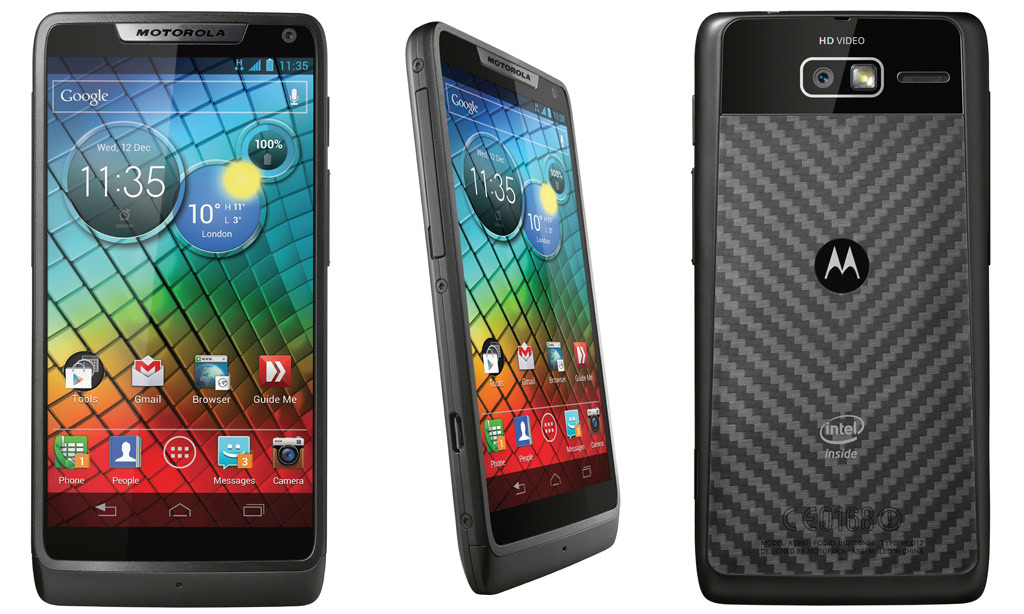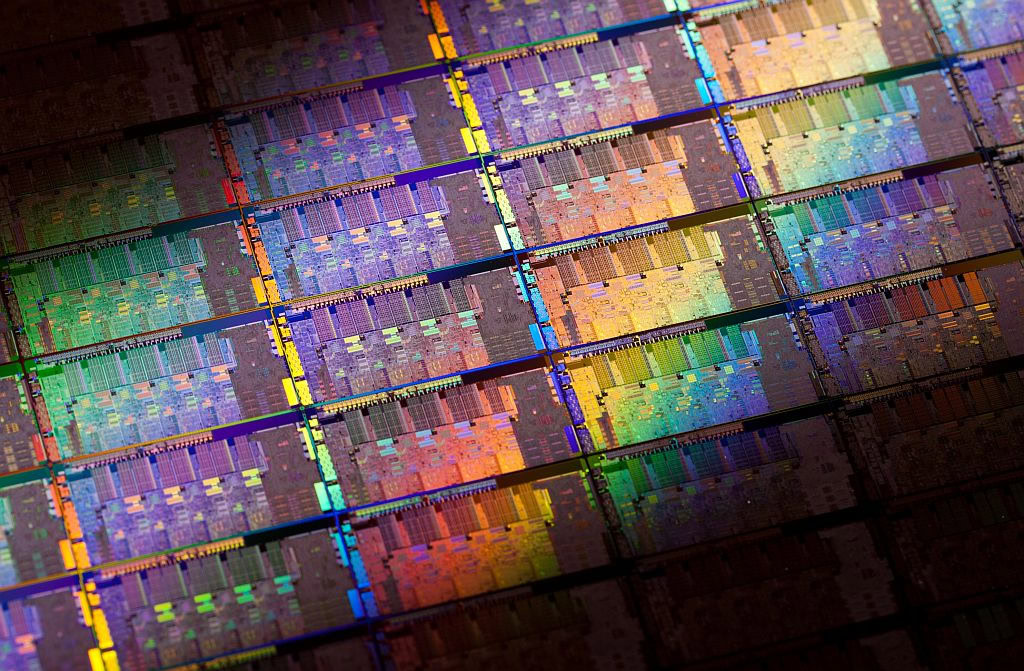Affiliate links on Android Authority may earn us a commission. Learn more.
Is Intel totally screwed?

I’m on my way to a coffee shop to put together my thoughts for a story. The topic, in my editor’s own words is, “I’d love you to show me how Intel isn’t totally screwed”. As I’m driving, it occurs to me, I have two Android devices on me, both running ARM cores, I’ve got an iPod touch in my glove compartment hooked to my car stereo, also running ARM, and I’ve brought along a Surface RT to actually do my work on – also an ARM based device. The chances are there are some chips made with Intel silicon around me – but it isn’t difficult to see why someone might have a pessimistic view of Intel’s future.
Over coffee and donuts on a beautiful February morning in Chandler, Arizona, I research Intel’s strategy to remain relevant and innovative in a “Post PC” market. PC sales based on their bread-and-butter “Intel Core” CPUs are tanking and despite having every advantage, mobile devices and smartphones that rely on Intel CPUs have yet to really catch on. Intel’s roadmap is public knowledge, directly revealed by Intel’s President, Renee James in their last investor’s call. The business press has discussed and analyzed these statements extensively, and investors seem to be favorably impressed in general – but technology outlets have remained largely silent, almost as if they’re unaware what Intel’s direction is.
The best chipmaker in the world
That direction may best be summarized as, “It isn’t all about Intel core CPUs, and it isn’t about being tied to any one operating system.”
To be honest, as a former employee, I frequently mention that Intel’s internal culture teaches “Intel is not a technology company, we are a manufacturing company.” That philosophy has been easy to say, but harder to put into practice when Intel Architecture CPU’s have remained such a tremendous cash-cow contributing billions of dollars to Intel profits for so many years.
So, if it isn’t about Intel core CPUs, and it isn’t about being tied to one OS (or the platforms those operating systems run on,) what is it about then? It seems mostly about having the most advanced fabs and foundries in the world for producing silicon based products and maximizing production and profit from those factories. On its face, this doesn’t seem ridiculous. It doesn’t matter what Intel makes with its sand, as long as it makes as much of it as possible and earns the biggest profit it can. It also doesn’t hurt that as far as tolerances, yields and the most advanced results are concerned, there may not be any other manufacturer in the world that can compete with Intel.
We could almost stop there in building a case for why Intel isn’t totally screwed. But the details on how this high level plan may be executed and what it means for consumers and IT professionals is the bigger part of this story.
Breaking away from Wintel
Intel has spent much of its life in a mutually beneficial but not always amicable relationship with Microsoft. The fortunes of both of these giants have been closely tied to one another. For obvious reasons, Intel actively discouraged employees from acknowledging a “Wintel” duopoly. That may not seem very important in 2014, but in 2001, it was something that was frequently stressed to new hires. This wasn’t just indoctrination or concern about SEC attention – there never was a Wintel duopoly. Each company was a strategic partner with individual agendas, roadmaps and aspirations, and they frequently were not compatible with one another. There was an inherent dependency on the actions of the other that caused Intel and Microsoft to be forced into an often uneasy partnership, but neither company seemed incredibly enthusiastic about it.
Intel has frequently explored ways to remain viable while being less dependent on Microsoft’s fortunes – and the rapid decline in demand for traditional PCs illustrates their desire to become platform agnostic was not unwarranted. The disruption brought by mobile devices may have finally given Intel their opportunity to develop platform independent solutions, but no one said the transition would be painless.
Intel transformed itself before
Intel has precedence for responding to dramatic swings in market realities. Andy Grove writes in “Only the Paranoid Survive,” about “critical inflection points”. At one point Intel was the largest “semiconductor manufacturer in the world,” and this title related not to microcomputer CPUs, but memory chips. Intel found itself challenged by Japanese manufacturers who were turning memory into a commodity product, inexpensive and reliable enough that world class quality was not worth paying premium for. Intel largely put the semiconductor memory manufacturing business, then its strongest business line behind it, and instead focused on their 8086 CPU, which IBM had just tapped as the core processor for its original IBM PC. The transition was a difficult period for Intel, but the long term payoff for making such a bold and risky decision was tremendous.
Can they pull off such a radical redefinition of who they are again?
Hindsight is 20/20
As an end user, I care as much about what CPU is in my device as Intel cares about what OS runs on their CPUs. If everything works I’m like most users – price, reliability, performance and battery life are my key drivers. My introduction illustrates that right now, non-Intel CPUs are meeting those criteria for me.
Intel won a design win with the Motorola Razr I. Those of us in the States are familiar with the Razr M. The I is the same device, running a 2Ghz Atom processor. Intel claimed a significant increase in speed and battery life versus the ARM based variant. Real world reviews were less generous, but indeed, the Atom processor delivered generally faster response and better battery life for around the same cost. Unfortunately, the RAZR M was only destined for South America and Europe – and that brings us to one of Intel’s liabilities, of which there are several, in competing against ARM in the smartphone market.
Intel did not see smartphones as disruptive to traditional PCs
It is easy with hindsight to think that Intel should have been more aggressively pursuing mobile device technology, but in 2003 the market looked radically different than in 2007 when the iPhone changed the game. Intel’s strategy did not include having the ability to include integrated baseband modems in their reference designs, nor did they see the potential for smartphones to be so disruptive to traditional PC markets. Among Intel’s many guiding philosophies, two important ones are to stick to their core competency and not to compete directly with OEM vendors. Wireless cellular technology was the domain of their partners and OEMs, and not really part of their competency in the technology supply chain. This created a blind spot for Intel that allowed them to fall behind in mobile tech.

There is no money in silicon
It wasn’t until their 2010 acquisition of Infineon that they had a baseband LTE modem in their possession. Even now their baseband modems are discrete chips and only recently they gained support for legacy 3G and 2G networks. This double whammy meant that Intel could not build complete solutions that supported the widest range of consumer demand for network compatibility, and the solutions they have are not integrated into their application processors, which is a less energy efficient design. There is no question that Intel is behind the curve in having all of the components together to compete with other mobile device platform providers, most notably Qualcomm. Strategically, they’ve acknowledged this and are taking steps to correct this.
Yet this is only part of the problem. From a manufacturer perspective, profits on the raw materials of a smartphone are slim. The OEM adds value to a smartphone design. This also isn’t Intel’s core business. They’re poorly positioned to compete with Apple and Samsung in this regard. The business complexity of the model for smartphones is far more complex than traditional silicon. What is the value add in Android handsets? Android hardware is relatively standard. The premium is in name brand reputation, and that relies on build quality, custom skinning and design.
And the silicon is where Intel’s competency is. This is part of why Intel missed phones. As a business unit, they focused on the fact that there was little profitability in their contribution to the OEM smartphone design process.

Losing developers
But as smartphones gained traction an interesting thing happened. The lasting endurance of “Intel Architecture” was always closely related to the size and scope of developing on legacy compatible IA64/32 or “x86” code. It was the dominant developer platform from the release of the original IBM XT until the iPhone and then Android gained traction. If you wanted to make a living writing code, you wanted to be writing on Intel platforms. Suddenly independent app developers were making millions on their iPhone code, and shortly this attracted larger publishers. Despite an initial difficulty in making money on Android, that didn’t stop developers and publishers from seeing the potential and flocking to that platform as well. A mass exodus of Intel architecture developers followed and new developers saw mobile platforms as the path to fame and fortune.
As the developer base shrank through attrition, so did the relevance and demand for classic Intel based platforms. Intel did not see that the rise of smartphones would damage their developer base and hurt the relevance of their core platforms. Intel missed phones and mobile because of a focus on silicon profits instead of the long term damage caused by a migrating developer base. Where the developers go, the users follow.
A two-pronged strategy
So it seems Intel’s strategy for remaining a relevant and competitive company focuses on two things – First, keeping profits and productivity as high as possible manufacturing whatever achieves this at their foundries. Second, growing back platform relevance that will encourage developers to provide support for chips that support their own code base. Intel does not see ARM itself as the competition here, it is a fractured ecosystem supported across multiple OEMs, Qualcomm, Nvida, Apple, etc.
No competitor matches the manufacturing capacity, capabilities, or experience of Intel
This may be where Intel has a significant advantage as a player. Intel has direct and complete control over internal design process of beginning-to-end optimization of performance and energy consumption – and only a few other OEM’s approach this in-house capability. None of them have the manufacturing capacity, capabilities, or experience of Intel. Apple is a great example of what a company can do when they have significant control of the design and manufacturing process. This is the reason why Apple tends to outperform and out-optimize the competition. But Apple still has to rely on external foundries to manufacture its silicon. It’s like aftermarket performance vehicle mods versus buying a factory tuned sports-car. You may make that perform better than a BMW M, Mercedes AMG or Audi S – but it is very difficult to give the overall experience, balance, refinement and optimization when you’re putting something together with components, and it’ll probably be more expensive in the long run too. This makes sense to me. But this assumes competing on price and performance. Right now Intel is struggling for mind share among developers and having the right mix of ingredients, specifically the LTE modem. Low powered Bay Trail multi-core application processors with integrated LTE 4G modems as a system on a chip (SoC), could radically change Intel’s relevance in the mobile device and smartphone market. But acquiring the technology, integrating it, and getting past domestic regulators is no easy task. Consider all of the wireless antennas on a typical device. Baseband modem, WiFi, Bluetooth, NFC and more, that all need to be FCC certified before a product can be launched. Just consolidating all of the components into one device is only the first challenge.
What’s next
So what does this mean about Intel’s future in mobile device markets? Well, that remains to be seen. The roadmap seems to be in place to respond to some challenges that have been overlooked during the tenure of the preceding two CEOs. I don’t think it matters if Intel is dominating in processor sales built on Intel architecture, if Intel can simply make themselves dominant in processor sales regardless of architecture. Intel’s foundries have the highest and most reliable die yields per wafer and they’re far ahead of anyone else. Intel fabs are recognized as “state of the art” – and will almost certainly maintain this advantage as fab technology advances. They can squeeze more profit out of each silicon wafer while delivering a better product. If their new CEO truly doesn’t mind what they’re building or who they’re building it for – Intel built ARM chips could easily become the preferred application processor in mobile devices. Neither Qualcomm nor Apple have their own fabs, they use TSMC. It remains to be seen if Intel will attract any significant use of its foundries to build ARM or other non-Intel semiconductors, but it is an interesting development. This philosophy is not limited to just traditional mobile devices. There are application processors and silicon in every accessory smart device, every wearable gadget, and every home automation solution. Intel is aggressively investigating how they can be the foundries that make the insides of those devices, too.

At the same time there is no reason why Intel’s traditional processors can’t compete with ARM on performance, reliability, energy efficiency and price. If that is the case it shouldn’t matter what runs on top of their mobile chips, Windows Phone, Windows 8, Android, iOS or any other platform. In the case of Android, getting a reliable version of Android for Intel should bring along the entire Android library of apps – developers can write agnostic code that runs regardless of the underlying chipset. If performance, price and energy efficiency were equal or better on an Intel powered Android device to an ARM based one, I might consider a modest premium for the Intel variant. That could help address the profit portion of the manufacturing process.
Although on the ropes in some ways, Intel shows every sign of still being in the fight and having the qualities to stage a comeback
There are intangible factors that remain, including subjects as trivial as consumer perception of Intel’s brand. Apple remains cool, Intel hasn’t had much social cachet since the days of their dancing bunnymen. Although the current CEO has ambitious goals, the dedication of investors and the board to realizing those goals could derail this ambition before it is realized. If the OS runs better on ARM, poorly implemented OS platforms on Intel would hurt the perception of Intel, not the OS. The competition isn’t going to stand still and wait for Intel to achieve dominance in mobile computing platforms. Finally, Intel still needs to put together some of the pieces before they can even begin to test if significant portions of this strategy will work. Although on the ropes in some ways, Intel shows every sign of still being in the fight and having the qualities to stage a comeback. As an end user, the competition can only give me more options, so I’d like to see Intel pull this off.
(Full disclosure, I am a former Intel employee and own a modest number of shares of Intel stock.)